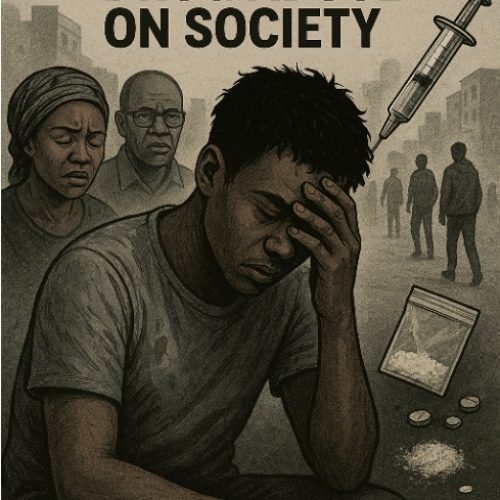LIFE AFTER REHAB: CHIKA’S JOURNEY BACK TO HOPE
LIFE AFTER REHAB: CHIKA’S JOURNEY BACK TO HOPE
When Chika walked out of the rehabilitation centre two years ago, she thought she had conquered the hardest part of her life. She was wrong.
Addiction had stolen her teenage years and much of her twenties. It had cost her friendships, fractured her family ties, and silenced her dreams of becoming a teacher.
Rehab had given her sobriety, but stepping back into the world meant facing the whispers, the scepticism, and the temptation that lurked at every corner.
“I remember the first Sunday I went back to church,” she recalls. “Everyone looked at me as though they were waiting for me to stumble. I wanted to shrink, to disappear.
Rehab teaches you to fight the cravings, but nobody prepares you for the stigma.”
For many recovering drug challenges like Chika, life after rehab is not just about staying clean, it is about rebuilding an identity.
Every job interview comes with the fear of being asked about the gap years.
Every family gathering carries a quiet tension, as though trust must be re-earned spoon by spoon.
Yet, Chika is learning to embrace small victories.
She attends group therapy weekly, leans on a mentor who once walked her path, and journals every morning to remind herself that healing is not linear.
“Relapse is always a shadow,” she admits. “But I’ve learnt that relapse is not failure, it’s a signal to ask for help, to pick up the tools we learnt in rehab and try again.”
Experts say this is where society must play its part.
Recovery does not end with rehab; it requires community support, acceptance, and opportunities for reintegration.
Without them, many who leave treatment centres find themselves drifting back to the same cycle they fought to escape.
At Balm for the Bruised Foundation, we have seen too many bright young people relapse simply because society shut its doors to them.
We must shift from judgement to understanding, from rejection to reintegration.
Chika now volunteers at a local youth centre, telling her story to teenagers on the edge of destructive habits.
Each time she speaks, a hand shoots up in the crowd, someone recognising their struggle in hers. “If my story keeps one person from going through what I did,” she says with tears in her eyes, “then my pain has found its purpose.”
Her journey is not perfect, but it is proof that life after rehab can be lived with dignity, courage, and hope, if only we walk with survivors, not against them.
Your Turn:
Have you or someone you know struggled with life after rehab?
What can families, friends, and communities do better to support survivors?
How do we reduce the stigma around addiction recovery?
Share your thoughts. Let’s start the conversation.
Visit Balm for the Bruised Foundation to learn how you can support people in recovery and join our mission to break the cycle of stigma and silence.
About author
You might also like
WHEN A SON IS LOST, A COMMUNITY BLEEDS
WHEN A SON IS LOST, A COMMUNITY BLEEDS In the heart of a bustling Nigerian neighbourhood, Amaka still sets a plate at the table for her first son, Chijioke. It
BEYOND THE FENCE: HOW STRICT BORDER CONTROL SAVES LIVES
BEYOND THE FENCE: HOW STRICT BORDER CONTROL SAVES LIVES When Amina lost her younger brother, Farouk, to a cheap mix of tramadol and meth smuggled through Nigeria’s borders, she didn’t
PEER PRESSURE: HOW TO SAY NO AND MEAN IT
PEER PRESSURE: HOW TO SAY NO AND MEAN IT I remember the day as if it happened yesterday. Chika had always been the life of the room the kind of




0 Comments
No Comments Yet!
You can be first to comment this post!